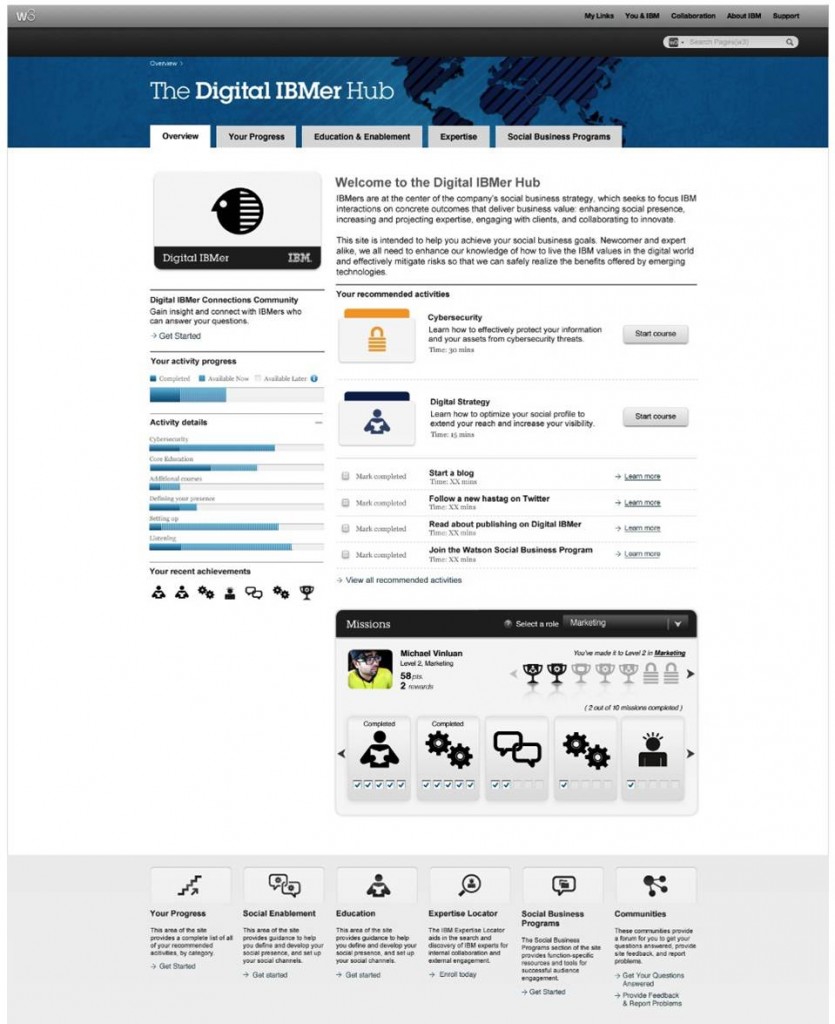There is no right answer to this question. The number of hours of social media training required depends entirely on the individual, for two reasons:
- Each person comes into social media training with a different level of understanding, skill and practical application of social capabilities.
- Each person is unique in the way they learn, some requiring more time than others.
So saying any given number of hours is sufficient is the really the wrong question. The notion of setting the clock and saying everyone should be able to get this in a set amount of time is pretty dangerous concept. Let’s play this out a little further …
Early adopters of social who’ve built a significant presence and social currency on their own prior to the training, may need very little training. While those starting from scratch and/or have many doubts about the value of social to begin with (these are the ones who come kicking and screaming into the training), may need much more, that is … if you convince them to being trained in the first place.
When building a training curriculum start by teaching:
- The value of building trust and credibility online and how it can be used to engage with colleagues, partners and customers to establish or nurture relationships.
- Help your employees understand the shift in the way people seek and consume information. And, how the most sought after sources are actually credible and trustworthy experts in their field. The 2012 Edelman Trust Barometer is a great study showing this trend.
- Explain the way humans communicate has changed dramatically as a result of social capabilities, our world becoming increasingly more social every minute and earned media sources remain most credible, the Nielsen Global Trust in Advertising Survey provide more details.
- Help them to understand how their personal engagement can benefit them professionally, as well as benefiting the company or the customers they serve.
- Be clear about the level of effort and commitment required to develop an effective online presence.
One size fits all training in a set amount of time with certification is a recipe for disaster. As cited by Gallup Leadership research:
When leadership fails to focus on individuals’ strengths, the odds of an employee being engaged are a dismal 1 in 11, or 9%. But, when . . . leadership focuses on the strengths of its employees, the odds soar to almost 3 in 4, or 73%. When leaders focus on and invest in their employees’ strengths, the odds of each person being engaged goes up eightfold.
I recommend a training program include an assessment of the employee from which they can plot the course that’s right for them. Consider approaching the assessment and personalized planning through the following steps:
- Inventory each participant’s social presence to understand the social venues they use and how they use them.
- Understand each person’s motivation for getting involved and remaining engaged in social media.
- Assess the employee’s preferred online behaviors to determine the employee’s comfort level with various methods of engaging online. For example, do they only read what other people publish? Do they comment on other people’s content? Or do they create content on their own?
- Determine the most effective ways to mobilize each employee according to their strengths and preferences. Also determine how you will empower them to utilize their skills, preferences, and strengths.
A social employee training curriculum needs to begin with an overview of the benefits of participating, clearly defining the expectations, time commitment, training support provided and the milestones, goals or desired outcomes your expecting them to drive. For example, our program focuses on 3 key themes Go Social. Stay Safe. Be Smart.
- Go Social: Collaborating via social computing to pioneer intellectual capital and drive innovation that matters for clients and the world
- Stay Safe: Practicing secure computing – building trust by taking personal responsibility to secure IBM, our clients and colleagues
- Be Smart: Building and sharing insight and expertise, and exercising good judgment
We’ve created over 60 courses available on the Digital IBMer Hub, IBM’s employee training portal, to educate our 430,00+ employees on Social Business best practices. Nearly 200,000 courses have been completed.
This is a tremendous opportunity for the employees, but they may not see it right away. If they don’t see the value for them personally and what they’ll get out of it any amount of time is a waste.
This post was inspired when I served on a panel today at the Social Media Today “Social Shake Up” event with Richard Margetic, Director, Global Social Media, Dell and Sandy Gibson, CEO, Elevate, our panel moderator was, Greg Shove, Founder and CEO SocialChorus. The panel was called “Throwing Open the Floodgates: Empowering Employees” – here’s a brief descriptor: The rise of social media means that employees can become engaged with their customers within their individual capacities. But of course that’s easier said than done. Well ask four important questions: What are the floodgates, what does through them open mean, what are the risks and rewards of dong so and finally, how do you best throw them open?
Our panel moderator, Greg Shove, asked us an interesting question …
“How many hours of social media training are enough for your employees before your brand considers ready to participate in social media?”
Richard, responded explaining the Dell Social Media and Communities University (SMaC U) program requires 8 hours of training before any employee can receive their certification and use the @Dell identifier an officially represent the brand.


